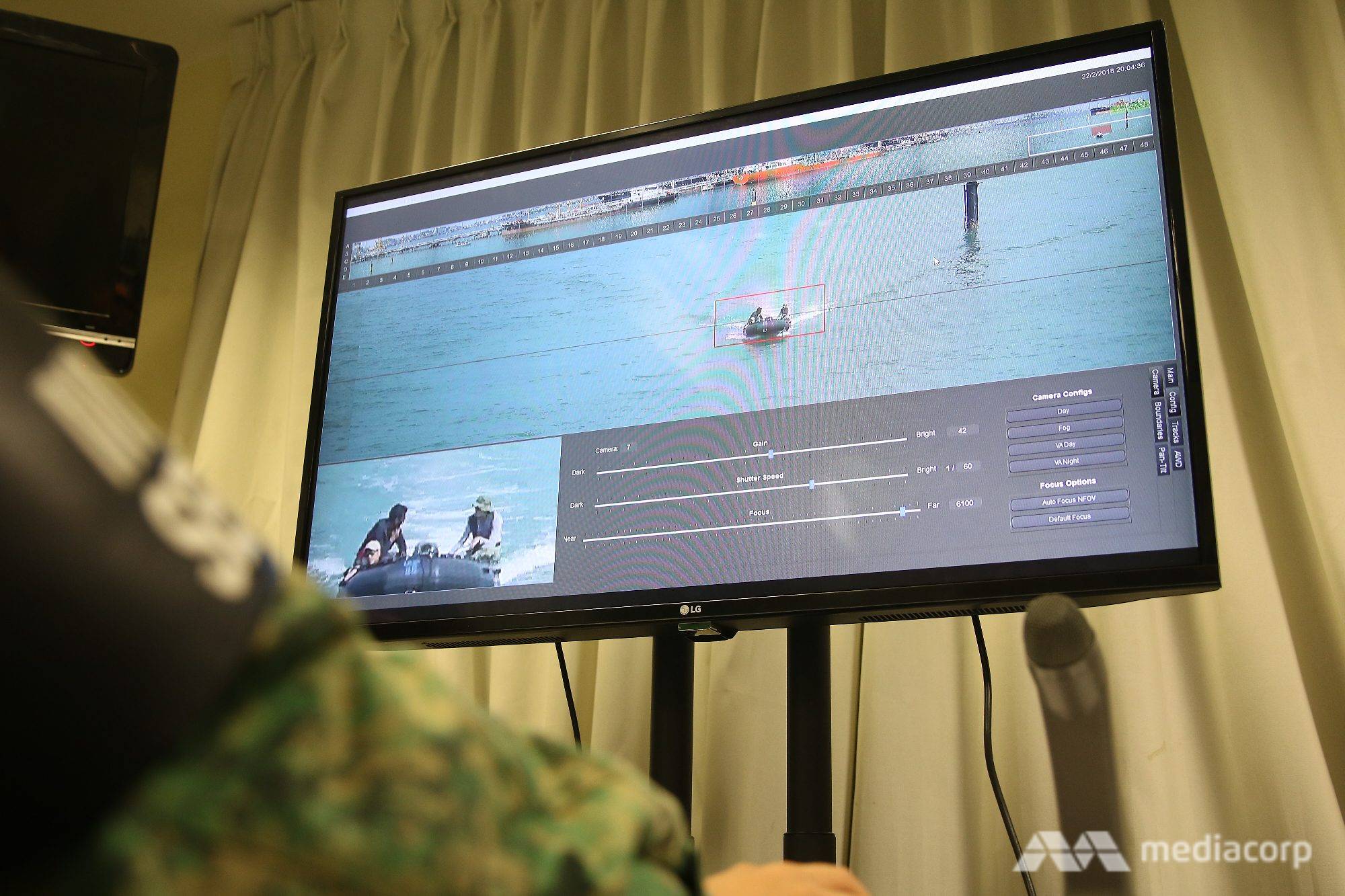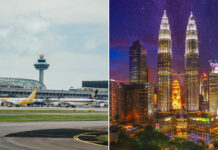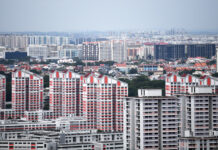SINGAPORE: The Singapore Armed Forces (SAF) will gradually resume overseas exercises, Defence Minister Ng Eng Hen said, noting that an extended suspension of more than two years will impact its capabilities.
The Republic of Singapore Navy (RSN) will in July send a frigate to Hawaii for Exercise RIMPAC, which will involve 24 ships from 11 nations, he said. The Republic of Singapore Air Force (RSAF) is also working with its Australian counterparts to resume short-term overseas flying training detachments.
Overseas exercises are crucial to the SAF as they enable troops and platforms to train realistically and conduct live-firing in a much larger space and on challenging terrain.
An RSAF A330 multi-role tanker transport refuelling an F-16 during Exercise Forging Sabre in US. (Photo: MINDEF)
On May 12, the SAF announced that because of the COVID-19 pandemic it would suspend all large-scale overseas exercises, including Exercise Wallaby in Australia, which is its largest overseas training exercises.
The SAF also cancelled a number of overseas exercises, including officer cadet training in Brunei and part of an armoured platform exercise in Germany.
READ: COVID-19: SAF suspends all large-scale overseas exercises, including Exercise Wallaby
“We have been very clear that you cannot do what you have done before,” Dr Ng told reporters on Thursday (Jun 25) in an interview ahead of SAF Day.
“We cancelled some overseas exercises, and that is because the host country also had safety measures and were not comfortable receiving overseas troops.”
Dr Ng said the SAF replaced the suspended overseas training with simulation or live training in Singapore, although he acknowledged “it is never as real as the actual live-firing”.
The Air Force’s CH-47 Chinook helicopters performing an underslung operation during Exercise Wallaby in Australia. (Photo: MINDEF)
In late May and June, the Republic of Singapore Navy participated in separate passage exercises with the US and Japanese navies, ahead of the larger Exercise RIMPAC in July, which will involve more complex warfighting and live firing practice.
Passage exercises are done between allied navies to ensure they can communicate and cooperate during war or peacetime operations. This includes conducting flashing light or physical signal drills.
An RSN frigate conducing replenishment at sea to refuel with an oiler from the US Navy during Exercise RIMPAC. (Photo: MINDEF)
The Ministry of Defence (MINDEF) said more overseas training will resume on a case-by-case basis, especially exercises that do not involve physical disembarkation and interaction.
The minister said the successful and safe resumption of smaller overseas exercises will give the SAF confidence that it can conduct larger ones across its three services.
READ: SAF to increase scale, complexity of overseas training in areas up to 80 times size of Singapore
At Exercise RIMPAC, for instance, crew aboard RSN’s RSS Supreme frigate will not disembark the ship when going to or returning from the exercise. The exercise will be conducted entirely at sea with no physical interaction between participants.
RSN personnel conducting complex multi-dimensional warfare serials from the frigate’s combat information centre during Exercise RIMPAC. (Photo: MINDEF)
Dr Ng said the ship will also have reconfigured cabins for isolation bays that have a separate ventilation system. The ships will also have COVID-19 test kits and medical teams to care for patients in “worst-case scenarios”.
“They needed to do that because if, for instance, you had to conduct a real operations against, let us say, a terrorist incident and you have to be out at sea, you need those capabilities,” he said.
“You cannot say a ship that has been attacked by terrorists, held hostage, and you are out there, but I stand down because of COVID-19.”
OVERSEAS TRAINING DISRUPTION IMPACT
The good news is construction on SAF’s overseas training areas in Guam and Australia are progressing as planned, Dr Ng said.
The setting up of an RSAF Fighter Training Detachment at Andersen Air Force Base in Guam is expected to be completed by 2029. The expanded Shoalwater Bay Training Area and new Greenvale Training area in Australia is expected to be ready by 2024 and 2028 respectively.
An SAF Light Strike Vehicle participating in Exercise Wallaby at SWBTA. (Photo: MINDEF)
Dr Ng said a disruption of six to nine months of overseas training will not affect operational readiness as units can still conduct training in smaller, separate groups while continuing critical operations.
“But if these disruptions last two to three years, will there be impact? The honest answer by all ministries of defence or militaries is they will say invariably there will be some impact,” he added. “And you have to find other ways to accommodate that.”
ONE COVID-19 CASE IN CRITICAL OPERATIONAL UNITS
Nevertheless, Dr Ng praised the SAF for being able to continue with critical operations, including protection of key installations, air defence and counterterrorism, throughout the pandemic, with only one COVID-19 infection so far.
“I want to congratulate them because for all these months, thousands of people on duty, we only have one infection,” he revealed. “We basically maintained clean units and they kept Singapore safe because of how they conducted the operations.”
File photo of an RSAF F-15SG (Photo: Loke Kok Fai)
Dr Ng did not give more details on the case, but said these soldiers are “bound to have exposure to infected patients”.
“Remember that we draw our soldiers from the population, so if u have 50 infections in population, it’s not as if the SAF men and women are separated from their families every day for the last three months,” he said.
SAF and SPF personnel conducting island defence training. (Photo: MINDEF)
Servicemen performing critical functions are cohorted and required to stay in camp before and during their operational duty to reduce the risk of infection. This means that some have lived on base for weeks on end.
“If you just calculated the incidence rates, one out of a few hundred thousand SAF troops operating, it is very, very difficult to achieve,” Dr Ng added. “And I am proud that our men and women have achieved it. That is because of extreme vigilance as well as sacrifices.”
The Island Defence Task Force’s unmanned watch tower is 6m tall. (Photo: Aqil Haziq Mahmud)
MINDEF said SAF’s Island Defence Task Force, which works with Home Team agencies for homeland security, will set up a new Island Defence Command, Control, Communications, Computer and Intelligence (C4I) Surveillance and Reconnaissance battalion by the end of this year.

Through the unmanned watch tower, threats that cross into a restricted zone are automatically detected, triggering an audio alert. (Photo: Aqil Haziq Mahmud)
The battalion will manage a new command and control information system that allows the task force to cooperate better with the Ministry of Home Affairs and other public agencies, improving integrated planning, sense making and coordinated responses.
The battalion will also be equipped with sensors and data analytic systems to support the the task force’s intelligence and operational needs.
NEW NORMAL IN SAF
Dr Ng said the SAF is also prepared to help the nation fight COVID-19 in the long run, as he warned it would be “very short-sighted thinking” to say there would not be a second or third wave of infections in Singapore and elsewhere.
“If you do not deal with the COVID-19 epidemic locally and it gets out of hand, it overwhelms the national healthcare system, and that in itself affects security,” he said.
Patients consulting the roving medical team at the community recovery facility at Tanjong Gul for minor ailments such as headaches. (Photo: MINDEF)
The SAF has helped distribute masks, converted camps into patient facilities and contributed to swabbing operations in migrant worker dormitories. It has also taken strict safe distancing, cohorting and hygiene measures within its own ranks
“Is it sustainable? What is the new normal? It is what it is,” Dr Ng said. “All militaries will have to grapple with it. I think that our successes have given us confidence that we can control it.”
READ: All NSFs, NSmen to get higher monthly NS allowance in recognition of contributions
READ: Improving NS experience: New NS Hub brings together pre-enlistment medical, IPPT, e-Mart
The National Service Review Committee, which looks at better matching of skills to vocations and using technology for operationally-ready NS activities, could also explore conducting some in-camp training activities remotely while in camp, he said.
Dr Ng said the committee will start giving recommendations in the fourth quarter of this year. The last large review completed in 2013 led to an increase in financial incentives and extension of the individual physical proficiency test window.
Singapore Armed Forces (SAF) personnel packs face mask for distribution to the public at SAFTI Military Institute in Jurong on Jan 31. (Photo: Try Sutrisno Foo)
The minister said the new normal of taking precautions in a post-COVID-19 world can be sustainable if the “entire population” understands it.
“It is sustainable if we continue to be disciplined because we have to open up our economy,” he added. “I think we have to find the wherewithal, the ways and means, but it can be done.”




